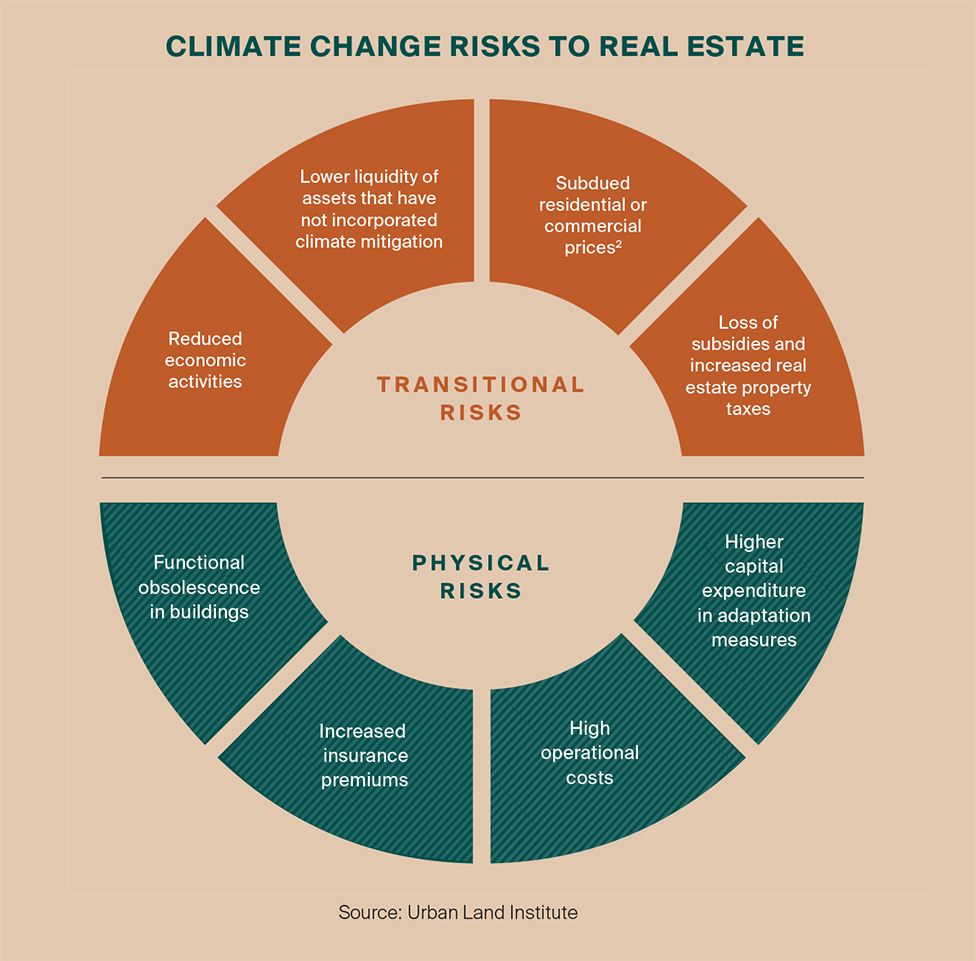How climate change will affect Africa's urban areas
Climate change is set to have a profound impact on Africa’s rapidly expanding cities over the coming decades. With the help of Knight Frank’s specialist Geospatial team, we explore what the future holds for urban dwellers, businesses, entrepreneurs and investors
4 minutes to read
The allure of cities is strong. For millennia people have gathered in them to trade, learn and have fun, resulting in productivity, innovation and, ultimately, economic growth.
Twenty-first century Africa epitomises this trend: the continent is expected to record the highest rates of urbanisation anywhere in the world. UN-Habitat estimates that 700 million additional people will move to the cities of Africa over the next 35 years. That means an entire New York City will need to be built – every six months. And, with a rising youthful demographic, half of these new city dwellers will be under 35.
But with more and more people vying for space in them, Africa’s cities are getting warmer. The Köppen-Geiger climate change predictions for 2050 illustrated in the map on the opposite page shows how the impact of these changes will be felt in African cities, in two distinct ways.
First, a combination of the urban heat island effect combined with global warming will have a direct impact on the environment within the cities themselves.
Scientists define the urban heat island effect as the resultant impact of ongoing human activities such as construction on the urban environment. As a result, air, surface and soil temperatures in cities are almost always higher than in rural areas. For example, over the past two decades, temperatures in London have at times been up to 5°C warmer than in nearby rural areas. Nairobi has recorded an average air temperature increase from 18.8°C in the 1950s to 19.5°C in 2000s.
While urban heat is yet to reach alarming levels in Africa, increasing urbanisation rates look set to have a significant impact on the climate. Our map indicates that extreme weather changes are predicted in central and southern Africa, including in the capital cities of Lilongwe, Malawi and Lusaka, Zambia. These areas are anticipated to shift from a warm humid sub-tropical climate to a savannah climate. Further, in Ethiopia and Kenya, in the suburbs of Addis Ababa and Nairobi, a shift from a humid sub-tropical highland warm climate to a tropical equatorial savannah climate is expected.
Second, extreme weather changes in rural areas are anticipated to impact on agriculture as a main source of livelihood, ultimately driving still more people to the cities.
In west Africa, the changes are mostly occurring in the rural areas of Togo, Nigeria and Cameroon and central parts of Gambia, Senegal, Burkina Faso and Chad, while in Mali, changes in climate are occurring near the capital city of Bamako. These areas are predicted to change from equatorial savannah climates to semi-arid. In other areas, such as Burkina Faso, longer dry seasons are expected, leading to increased drought and desertification resulting in increased rural to urban migration.
Like many crises before, Covid-19 is likely to inspire an evolution. Fixing our cities is anticipated to be the most urgent post-Covid challenge. While there is no simple solution to climate change itself, it is the built environment that poses the greatest challenge. A report into the efficiency of green infrastructure treatments by researchers from Portland University indicates that urban heat is impacted by six main factors.

These can be grouped into two categories, natural and human-built. The first category includes such natural elements as ground level vegetation and the height and volume of tree canopies. The second category includes human-built elements such as the volume and colouring of buildings, and variations
in their heights. Although creating cooler cities does not necessarily mean building at lower densities, adapting the built environment to absorb increasing heat intensity through green infrastructure is the first step towards mitigating climate change challenges in African cities.
Already, green urban development has emerged as a priority for most of the cities across the continent.The World Bank notes that incorporation of substantial green open spaces in developments remains the most cost-effective strategy for maintaining high levels of environmental quality in African cities. Cities such as Durban and Dar es Salaam are already leading in these initiatives across the continent.
While the trends mentioned above may present challenges, they also herald an exciting era of innovation and opportunity for developers and real estate investors prepared to adapt and work closely with environmentally-focused entrepreneurs, architects, designers and urban planners.
